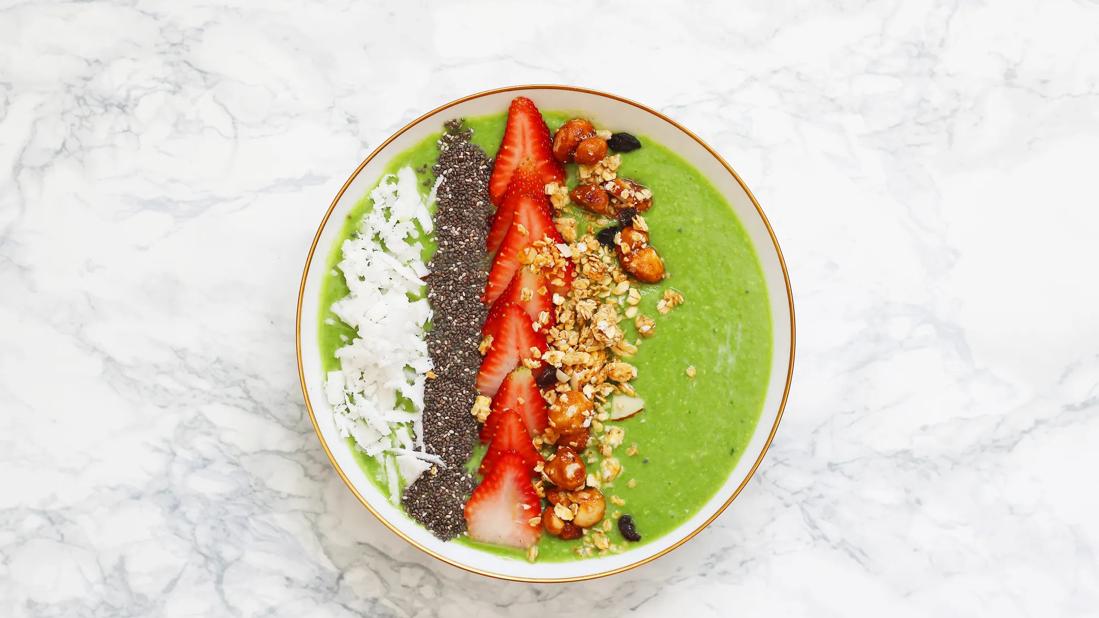There’s usually a simple answer, like what you ate, but the color can also be a cause for concern

There’s an expectation as to what you’ll see in the toilet after pooping. So, when you look down into the water and spot green poop … well, it’s safe to say a few questions might enter your mind.
Advertisement
Cleveland Clinic is a non-profit academic medical center. Advertising on our site helps support our mission. We do not endorse non-Cleveland Clinic products or services. Policy
For answers, we turn to gastroenterologist Christine Lee, MD.
Let’s start with a basic fact: You’re not alone when you find an unexpectedly brilliant dash of color in the toilet bowl following a splashdown — and green is just one of the many unusual stool shades you may see.
But a surprise color on its own usually isn’t a reason to be alarmed. It does signal that something different is happening deep in your innards, but odds are that “something different” isn’t something bad.
“The color and shade of a bowel movement can vary day by day,” says Dr. Lee. “It’s like life — always changing and never exactly the same.”
So, what might make your poop turn green? Let’s look at some potential Technicolor® triggers.
What you’re eating is the most likely explanation for green poop, especially if you tend to nibble on garden fare such as broccoli, kale and spinach. The chlorophyll that gives those vegetables their green color can do the same to your poop.
Other potential food and drink sources that could make you “go green” include:
Advertisement
A food-fueled tint should disappear within a day or two once the source is flushed out of your system, notes Dr. Lee.
A less organic force — green food dye — could also be behind a Hulk-like hue on a No. 2, suggests Dr. Lee. (Consider this a consequence of eating a St. Patrick’s Day cupcake with unnaturally bright green frosting.)
Blue or purple food dyes also may turn your output a bit greenish as your digestive juices mix with the color additives.
Your poop color should return to a more boring brown once a dye source leaves your system.
Antibiotics can lead to small — and potentially colorful — changes to the way your body digests food. The reason? The medication can alter the bacteria flora in your gut, which can add a greenish tint to what comes out.
Some medications may upset your stomach, too, resulting in bile-filled diarrhea that looks a bit green, says Dr. Lee.
“Turning green” has long been a phrase used to describe someone showing signs of an illness. The same can be said of your poop, too, explains Dr. Lee.
Greenish stool could indicate that you have a bacterial infection (Salmonella or E. coli, for example), viral infection (norovirus) or a parasite (Giardia) causing a rapid transit “gush” of unabsorbed bile in diarrhea.
In some cases, green poop also could be a symptom of:
Removal of your gall bladder also may temporarily send more bile into your digestive tract, which can lead to greenish diarrhea.
But one word of caution before you start fretting. “All of these issues are possible, but they’re not the norm,” clarifies Dr. Lee. “If you feel perfectly fine and don’t have diarrhea, a different color bowel movement is most likely linked to something you ate.”
As mentioned, colorful poop isn’t all that unique and is usually connected to something you ate. Think about what recently passed through your lips and you’ll probably come up with a simple reason for the burst of color.
That being said, oddly colored poop might indicate something needs attention — particularly if it lingers or comes with symptoms such as abdominal pain, weight loss, bleeding, fever and vomiting. Pale poop or blood-tinged stool is of particular concern, too.
Call a doctor if symptoms fail to improve or resolve completely.
“Pay attention to your bowel movements, but don’t worry too much if you see something unusual for a day,” reinforces Dr. Lee. “There’s usually a very clear explanation that involves something you ate.”
Advertisement
Advertisement
Learn more about our editorial process.
Advertisement

Excess mucus, ulcers, a high-fat diet and pancreatic conditions can make stool sticky

Diet offers a rainbow of possibilities when it comes to the hue of your stool

If it’s brown, yellow or green, there’s typically no need to worry, but call your pediatrician if your little one’s stool is red, black or white

Everyone poops, but here’s what may affect how often you visit the toilet

Your #2 can be the #1 sign of a medical issue

What are your bowel movements telling you?

Start having sex about 72 hours before ovulation, then at least every other day during your fertile window

Attachment theory suggests that your earliest relationships shape connections throughout your life

It isn’t a recognized mental health disorder, but research shows that problematic social media use can negatively affect your mental health, self-esteem and sleep